All the world’s a stage, and all the men and women merely players. They have their exits and entrances, and one man in his time plays many parts, his acts being several ages. – William Shakespeare, As You like It, Act II
Yesterday for lunch I enjoyed a very local meal of “St. Peter’s Fish” and dates.
The fish was tilapia caught in the Sea of Galilee and fried whole, and the dates were picked locally. Along with this we had bread which was continually made in the stone oven outside the window where I was sitting. It was all tasty. I liked it so much I took my date back to my room.
It is time in my chronicle of this pilgrimage to introduce several of my fellow pilgrims. These are people that honestly do not play key roles in other acts of my life, but have thus far made an impression in this particular act.
Firstly, “the sisters.” This is a mom and her two adult daughters, who have obviously reached that enviable stage of life where they are adult friends with a deep bond rather than the authoritarian relationship of earlier parenthood. I missed that with Dad and I enjoy seeing it in others. The sisters have a Godly beauty that radiates outward, and which makes me question the lucidity of the gentleman that chose a life route other than this family.
“Mustachio” is a gentleman with a curled handlebar mustache, often connected to a bent aromatic pipe. This Roman Catholic is married to a Methodist pastor. They are individual spirits who sometimes cause delays for others as they make sure they get what they want out of their once-in-a-lifetime trip, but I really cannot blame them for this.
David Arons is our bodhisattva, our dragoman. He demonstrates the mild manners of Willy Wonka, gently guiding the often selfish and self centered tourists from going astray and turning into bubbles or blueberries or being carried away by the oompa loompas. Most likely to be carried away: Mustachio. Simultaneously, he demonstrates characteristics of Christopher Walken – “More cowbell.”
As we travel south away from the Sea of Galilee, we see to our left the mountains of Jordan, Syria and Israel. We learned yesterday that Iraq and its horrors are only 400 miles away and Aleppo and Beirut are just a jog to the north. Just passed a double moated Crusader castle. Speaking of Crusaders, where the western world often refers to the Crusades as an unjust effort of Christians to force their beliefs on other religions and nations by military tactics, in the Holy Land the Crusaders were soldiers who came in and regained the Jews’ lands from Moslems who had violently taken and often destroyed and pillaged it.
Anyway, other characters that I should mention are what I’m calling the cane gang. Three older men and I are relying heavily on our walking sticks everywhere we go. This makes us rather slow, and they say I’m too young for the group, but last I checked my constitutional law, age discrimination is frowned upon. So I’m in.
Next, there are people notably absent that I must mention, because after twenty something years of marriage, I’m finding the absence is only physical. When I look at a clock with Arkansas time, I find myself noting that M will be hitting her snooze button for the second time now, or coming home now, or MCL would be saying this about that. So even though I’m thousands of miles away, MCL is always with me in some fashion.
Likewise, and most importantly, the Trinity. If you have followed the story of my faith through the years in this blog, you will know of my past doubts and struggles. Given all that, at this point, God is a very personal and intimate Father to me. He knows my voice and I know His. We talk. He’s not just a distant “clockmaker” god. He is my Father and He is with me as I stroll (hobble) through this place. For that reason, the Valley of the Wind and Doves was a little overwhelming, to the point that I wanted to just walk quietly with Him on His old pathway, as I sometimes sit in my Dad’s old darkroom or shop and look at the tools he used. I expect Jerusalem to be a little like that.
The countryside of Southern Galilee is punctuated with olive trees, avocado trees, greenhouses, and now we pass by Mount Gilboa, where King Saul fell on his own sword to die in battle (1 Sam 28-31), and centuries later, where Saladin fought Crusaders in 1183, just before Marco Polo would wander through. Speaking of Saul, our first stop of the day was Bet She’an, where the bodies of Saul and his sons were nailed to the wall after that battle. The wall where they hung is part of the fortress at the top of the hill behind me here:

I’m standing in the middle of an ancient roman street in the ruins of the city built long after Saul was hung on the fort. These are the ruins of a Canaanite town, under a philistine town, under a Greek, under a Roman, under Byzantine Christian ruins, all of which were finally destroyed by a mixture of earthquakes and Moslem marauders. In the following pic you can actually see the a few of the layers:
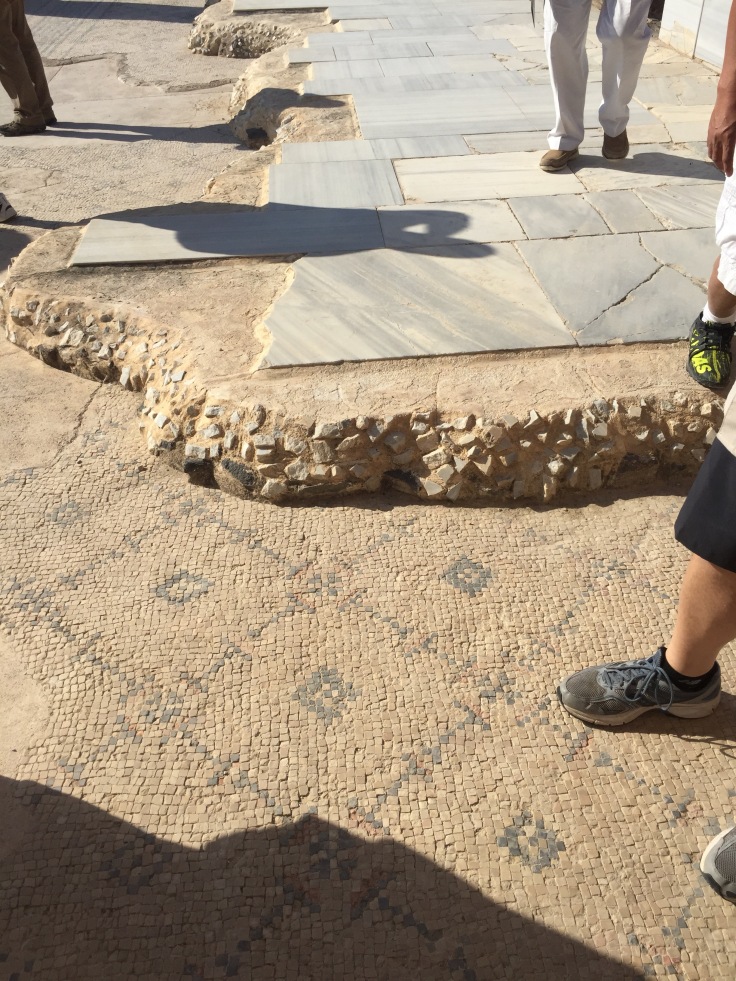
The tile is Greek; the initial stone over that is Roman, and then as the Roman city became more wealthy, they covered that with marble. It looks like a high end flooring showroom. This city was complete with baths, market areas, government areas, a theatre, and even an arena where the Romans would let the wild animals out to devour Christians for sport.
When we left this city, we traveled to the volatile area of the Western Bank. All was quiet and deserted on this Sabbath, but the border fences were manned at the appropriate towers to make sure no shenanigans occurred. Ironically, these are the same hills where the prophet Samuel, who anointed King David, was born according to I Sam. 1. This, “the wilderness of Judea, happens to be the same neck of the desert in which John the Baptist prepared the way for Christ. (Matt 3)
From here we traveled to Jericho. To exacerbate my dissonance on biblical locations, here’s what I saw with my own little eyes: Jericho, as we may already know, was the first victory of Joshua and the Isrealites in the Promised Land. Somewhere here lived Rahab the Prostitute, who lied to save their lives and help them accomplish God’s mission. They took Jericho – one of the oldest continually inhabited cities on Earth – when the walls came down. That’s the familiar part.  The surprise of the day for me is that if you stand on the ruins of that city, in the middle of modern Jericho (above), you can look North and see the Mount of Temptation and South to see Mount Pisgah which is just across the valley. What is Pisgah? Well that’s just the mountain where Moses died because God would not let him go in. According to Deuteronomy 34, Moses was buried by God Himself somewhere on the mountain in front of us, and Christ was tempted in the same Judean wilderness. (Matt. 3)
The surprise of the day for me is that if you stand on the ruins of that city, in the middle of modern Jericho (above), you can look North and see the Mount of Temptation and South to see Mount Pisgah which is just across the valley. What is Pisgah? Well that’s just the mountain where Moses died because God would not let him go in. According to Deuteronomy 34, Moses was buried by God Himself somewhere on the mountain in front of us, and Christ was tempted in the same Judean wilderness. (Matt. 3)
If all this wasn’t enough for a guy with an annoying swollen ankle and a swelling brain from the above, we next visited Masada, which was the mountain-top “impenetrable” fortress/palace of Herod. He built Masada as an alternate palace in case of need if the oppressed Jews ever decided to revolt. After he died in 4 B.C. the Romans destroyed Solomon’s Temple, and some of the Jews, knowing danger when they saw it, escaped to the vacant Masada to make a final stand. The Romans gave chase, camped all around it, and built a gargantuan ramp to use a battering ram to finally break in for the victory. It must have been a “Lord of the Rings” type battle.
The left is looking up at Masada, to give an idea of the difficulty of overtaking the fortress on top, and the right is an un-restored, original part of Herod’s color scheme, preserved in the dry heat of the area.
Tonight we sleep in a hotel on the Dead Sea. Basically in the old location of Sodom & Gomorrah. I hope it doesn’t “rain” as this place has a history of fiery storms.
Tomorrow: Bethlehem.
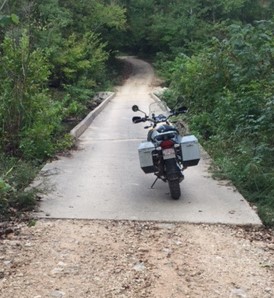
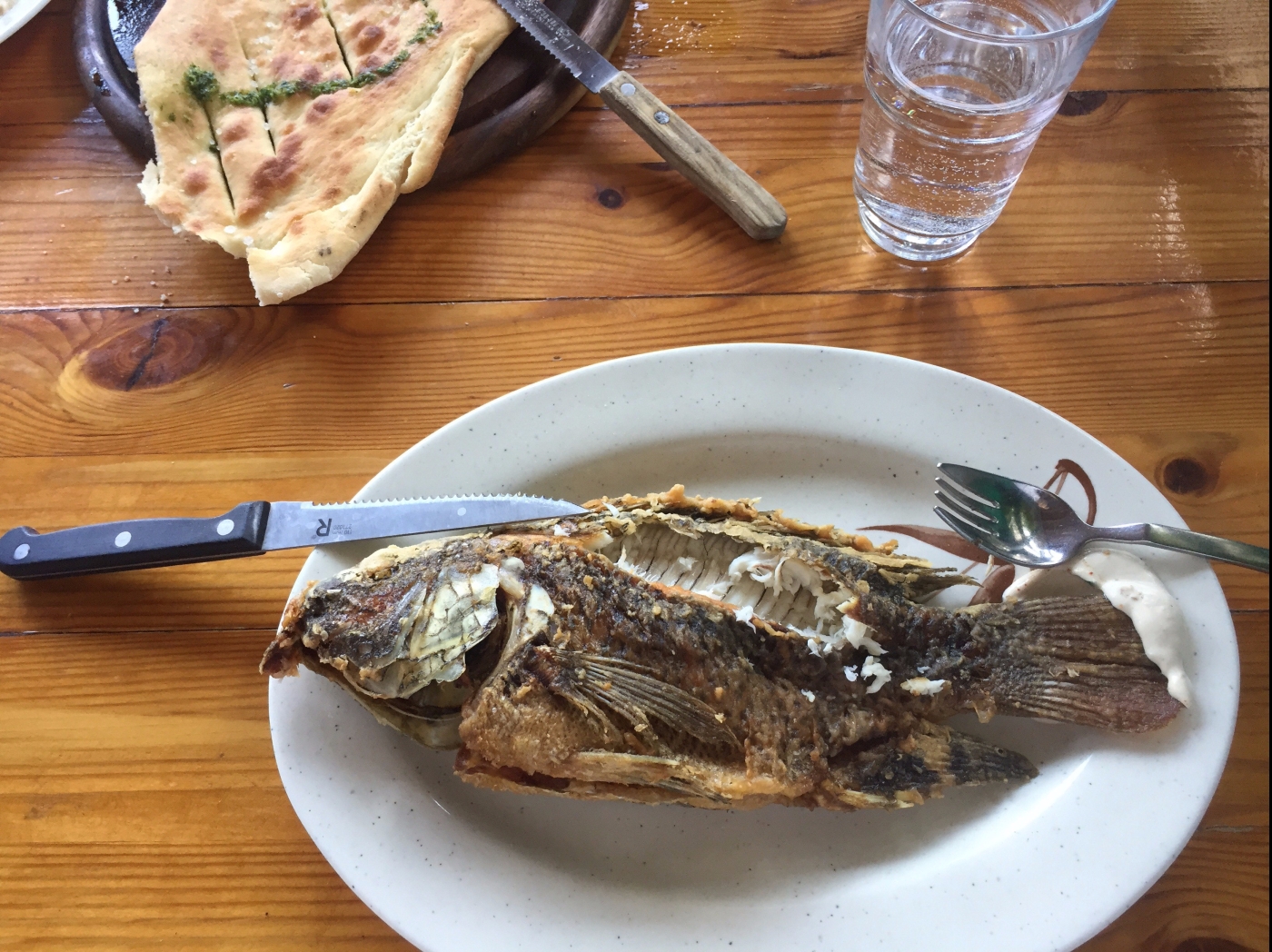





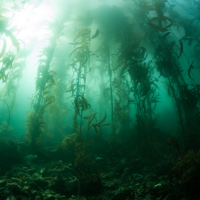

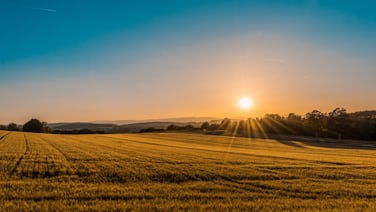
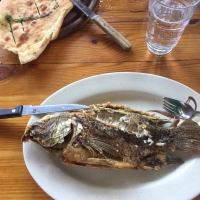
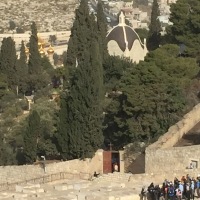

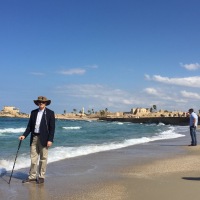
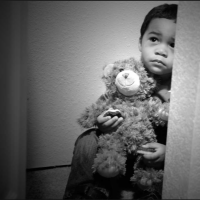
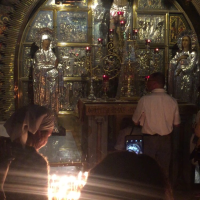
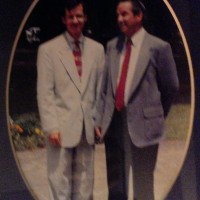
Thank you for sharing your journey with us–I love hearing about what the Holy land is like today!
LikeLiked by 1 person